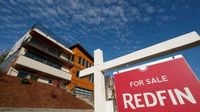Across Asia and the Pacific, the real estate market is experiencing dramatic shifts—some driven by investor optimism, others by caution and concern. While Japan’s urban centers see a frenzy of property investment, cities like Daegu in South Korea and Seattle in the United States are grappling with stagnation and unsold housing stock, all against a backdrop of fluctuating interest rates and evolving consumer behavior.
In Japan, the appetite for real estate investment has reached unprecedented heights. As reported by The Asahi Shimbun on November 9, 2025, property prices in urban centers have surged, prompting a wave of condominium and apartment purchases by individual investors eager to profit from rental income or resales. Bank loans for such ventures have soared to a record 29 trillion yen (about $190 billion), with new lending for real estate investment surpassing 1 trillion yen in both the first and second quarters of 2025. Notably, outstanding bank loans to individuals engaged in rental housing operations hit 28.9 trillion yen as of June 2025, reflecting the sector’s growing momentum.
This surge is not limited to institutional players. Take the story of a 39-year-old self-employed man from Narashino, Chiba Prefecture, who, seeking a more flexible lifestyle after leaving his government job, purchased a 38-year-old apartment building in Hanyu, Saitama Prefecture, for about 26 million yen in March 2025. He financed the purchase with a 20-million-yen investment loan, agreeing to a 35-year repayment term at a 4% annual interest rate. With each of the building’s four units rented at 42,000 yen per month, he estimates an annual net income of roughly 1 million yen after loan repayments. “I don’t want to work all the time. I want to be home and watch my child grow,” he told The Asahi Shimbun, expressing hopes of climbing the property ladder to eventually own a newly built apartment in Tokyo.
Yet, this optimism comes with caveats. While most homeowners in Japan opt for variable-rate mortgages below 1%, investment loans carry significantly higher rates, typically ranging from 3-5%. The risk is palpable: vacant units generate no income, and even fully rented properties can face challenges from declining market rents or unexpected maintenance costs. Financial planner Futoshi Fujikawa warned that in central Tokyo, an increasing number of properties are now operating at a loss once loan repayments, management fees, and taxes are factored in. The situation is even more precarious in suburban and regional areas, where lower rents make it harder to offset the relatively high burden of upkeep and attracting tenants can be a persistent challenge.
Despite these risks, investor interest remains strong, fueled by the expectation of continued property price growth and rising rental rates. Hirokazu Fuchinoue of Condominium Asset Management Inc. noted that domestic salaried employees, especially those at IT firms, trading companies, and financial institutions, have become key borrowers, their increased incomes driving further investment. Banks, too, are ramping up their lending, drawn by robust interest margins. Orix Bank Corp., for example, reported a 30% year-on-year increase in its “mansion loans” during fiscal 2024, while Rakuten Bank Ltd. saw its balance of “investment condominium loans” rise by 20% year-on-year as of June 2025.
But the market’s rapid expansion has not been without controversy. In Numazu, Shizuoka Prefecture, a scandal erupted over forged loan applications and falsified documents at Suruga Bank Ltd., raising concerns about oversight and transparency. According to Japan’s National Consumer Affairs Center, consultation cases related to investment condominiums rose to 405 as of August 2025, with over 60% of inquiries coming from individuals in their 20s and 30s—highlighting both the growing interest and vulnerability of younger investors.
Shinichi Nishioka, chief forecaster at the Japan Center for Economic Research, cautioned that while today’s market is fundamentally different from the asset-inflated bubble of the 1980s and 90s, vigilance is needed. “Unlike the bubble era, when optimism outpaced reality, today’s price increases are backed by genuine demand driven by structural changes in the economy,” he explained. Still, he warned that rising interest rates could trigger a retreat of investment capital, especially as Japan’s population continues to shrink and long-term housing demand may decline.
If Japan’s market is defined by investor-driven exuberance, Daegu in South Korea presents a stark contrast. According to the Ministry of Land, Infrastructure and Transport, as of September 2025, Daegu had 3,669 unsold apartments after completion—a 0.9% decrease from the previous month, marking four straight months of decline. Yet, Daegu still holds the highest unsold apartment inventory among South Korea’s 17 cities and provinces. The apparent improvement is less a sign of market recovery than the result of a dramatic supply contraction: housing starts plummeted from 12,691 units in January–September 2022 to just 734 units in the same period of 2025, a 67.3% decrease from the previous year. Since 2023, Daegu City has put a complete hold on permits for new dwelling construction, and no new presales were conducted in November 2025.
The unsold units are heavily concentrated in Dalseo District (2,661 units), Dong District (1,299 units), and Buk District (1,188 units), while Suseong District remains a rare bright spot due to its reputation as a top school district. In Dong District, real estate agencies report a total lack of transactions or inquiries, leading to market depression and even agency closures. As one agency representative noted, “There are no transactions at all and no inquiries, so not only is the real estate market depressed, but many real estate agencies are closing their doors.”
Experts warn that unless end-user demand increases, the unsold apartment crisis in Daegu will be difficult to resolve. Ko Jun-seok, chief professor at the Sangnam Institute of Management at Yonsei University, explained, “Just as other areas in Seoul do not all rise simply because prices go up in the three Gangnam districts, regional markets see even more concentration in places like Haeundae District in Busan and Suseong District in Daegu. Also, with various regulations, the preference for one solid home has strengthened, making it hard for regional real estate slumps to recover quickly. In particular, Daegu has accumulated a lot of unsold inventory, so unless end users flock there, recovery will not be easy.”
Meanwhile, in Seattle, the real estate market is experiencing a different kind of paralysis. As discussed on KIRO Newsradio’s “The Jake and Spike Show” on November 8, 2025, interest rates have fallen to 6.17%, the lowest since October 2024, but remain much higher than post-pandemic levels, which dipped below 3%. This has led to what hosts Jake Skorheim and Spike O’Neil describe as a “housing freeze.” Homeowners are reluctant to sell, unwilling to trade their favorable 3-4% mortgage rates for current rates that could double their monthly payments. O’Neil shared his own experience: “We’d love to downsize, but we’re locked in on a pretty great interest rate for our home. We’ve been there a little over 20 years now.”
This reluctance to move has kept the housing market sluggish, even as rates ease slightly. The freeze highlights how interest rate environments—whether high or low—can dramatically shape market behaviors, from speculative buying sprees to prolonged stagnation.
As the region’s real estate stories unfold, one thing is clear: whether driven by investor enthusiasm, regulatory interventions, or the chilling effect of interest rates, the fate of housing markets remains as unpredictable as ever.





